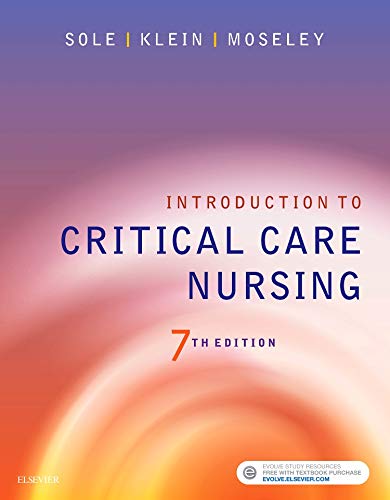Psychiatric Mental Health Nursing Concepts of Care in Evidence-Based Practice 8th Edition by Mary C. Townsend – Test Bank
1. The nurse understands that empathy is essential to the therapeutic relationship. When a patient makes the statement, ìI am just devastated that my marriage is falling apart,î the nurse can best show empathy through which of the following responses?
- A) ìI feel so bad for what you are going through.î
- B) ìYou feel like your world is falling apart right now.î
- C) ìI have been divorced too. I know how hard it is.î
- D) ìIt will get better; let’s talk about it.î
Ans: B
Feedback:
Therapeutic communication techniques, such as reflection, restatement, and clarification, help the nurse to send empathetic messages to the client. The nurse must understand the difference between empathy and sympathy (feelings of concern or compassion one shows for another). Sympathy often shifts the emphasis to the nurse’s feelings, hindering the nurse’s ability to view the client’s needs objectively.
2. The nurse is working with a patient who has quit several jobs and no longer sends financial support to his two children living with their mother. This behavior is in conflict with the nurse’s values concerning responsible parenting. When discussing family roles with the patient, the nurse shows positive regard through which statement?
- A) ìHow is not working right now affecting you?î
- B) ìHow do you expect your kids to be provided for?î
- C) ìYou need to somehow find a way to support your children.î
- D) ìCan the children’s mother can get by for a while until you get better?î
Ans: A
Feedback:
The nurse who appreciates the client as a unique worthwhile human being can respect the client regardless of his or her behavior, background, or lifestyle. The nurse maintains attention on the client and avoids communicating negative opinions or value judgments about the client’s behavior. In using positive regard, the nurse avoids value judgments and shifting of the focus away from the patient.
Page 1
3. Which of the following statements is true of the component of a therapeutic relationshipóìacceptanceî?
- A) The nurse accepts the behavior of any inappropriate behavior.
- B) It is avoiding judgments of the person, no matter what the behavior is.
- C) It involves punishment for inappropriate behavior.
- D) It is the ability of the nurse to perceive the meanings and feelings of the client and to communicate that understanding to the client.
Ans: B
Feedback:
Acceptance is avoiding judgments of the person, no matter what the behavior is. It means accepting the person but not necessarily the behavior. It does not involve punishment for inappropriate behavior. Empathy is the ability of the nurse to perceive the meanings and feelings of the client and to communicate that understanding to the client.
4. Which of the following behaviors by the nurse demonstrate positive regard? Select all that apply.
- A) Communicating judgments about the client’s behavior
- B) Calling the client by name
- C) Spending time with the client
- D) Responding openly
- E) Considering the client’s ideas and preference when planning care
Ans: B, C, D, E
Feedback:
Calling the client by name, spending time with the client, and listening and responding openly are measures by which the nurse conveys respect and positive regard to the client. The nurse also conveys positive regard by considering the client’s ideas and preferences when planning care. The nurse maintains attention on the client and avoids communicating negative opinions or value judgments about the client’s behavior.
Page 2
5. The nurse initiating a therapeutic relationship with a client should explain the purpose, which is to
- A) alleviate stressors in life.
- B) allow the client to know the nurse’s feelings.
- C) establish relationships.
- D) facilitate a positive change.
Ans: D
Feedback:
The client who has unmet or unsatisfactorily met needs seeks to make changes; the nurse facilitates this desire to change. The focus of the therapeutic relationship is on the client’s needs, not the nurse’s. The orientation phase begins when the nurse and client meet and ends when the client begins to identify problems to examine. During the orientation phase, the nurse establishes roles, the purpose of meeting, and the parameters of subsequent meetings; identifies the client’s problems; and clarifies expectations.
6. Which of the following is the most important skill the nurse must bring to the therapeutic nurseñclient relationship?
- A) Confrontation
- B) Empathy
- C) Humor
- D) Reframing
Ans: B
Feedback:
The nurse must be able to express caring and concern for the client. Empathy is the ability of the nurse to perceive the meanings and feelings of the client and to communicate that understanding to the client. The ability to use confrontation, humor and reframing are also important skills but not as important as the skill of empathy.
7. Which is a standard for establishing a code of conduct for living?
- A) Acceptance
- B) Empathy
- C) Values
- D) Positive regard
Ans: C
Feedback:
Values are abstract standards that give a person a sense of right and wrong and establish a code of conduct for living. Acceptance occurs when the nurse does not become upset or respond negatively to a client’s outbursts, anger, or acting out. Empathy is the ability of the nurse to perceive the meaning and feelings of the client and to communicate that understanding to the client. Positive regard is an unconditional, nonjudgmental attitude.
Page 3
8. A nurse makes the statement in a treatment team meeting, ìIt’s not worth it to try to teach this patient how to make better choices. He has been here many times before and goes back home and does the same thing.î The nurse is sharing which of the following?
- A) Value
- B) Awareness
- C) Belief
- D) Attitude
Ans: D
Feedback:
Attitudes are general feelings or a frame of reference around which a person organizes knowledge about the world and people. Values are abstract standards that give a person a sense of right and wrong and establish a code of conduct for living. Beliefs are ideas that one holds to be true; for example, ìAll old people are hard of hearing,î and ìIf the sun is shining, it will be a good day.î
9. The client tells the nurse, ìI don’t think you can help me. Every time I talk to you, I am reminded of my mother, and I hated her.î The nurse should recognize this as
- A) confrontation.
- B) countertransference.
- C) incongruence.
- D) transference.
Ans: D
Feedback:
Transference occurs when the client unconsciously transfers to the nurse feelings he or she has for significant others. Confrontation is a technique used to highlight the incongruence between a person’s verbalizations and actual behavior. Countertransference occurs when the therapist displaces onto the client attitudes or feelings from his or her past. Incongruence occurs when the communication content and process disagree.
10. When preparing for the first clinical experience with patients on a forensic unit at a psychiatric hospital, the nursing instructor discusses students’ beliefs and fears surrounding forensic patients. The primary reason for discussing personal beliefs is to
- A) practice reflective communication skills in a role-play situation.
- B) assign the most compatible patients to the students.
- C) assess the appropriateness of the setting for implementing nursing skills.
- D) become aware of possible barriers to developing therapeutic relationships.
Ans: D
Feedback:
Self-awareness allows the nurse to observe, pay attention to, and understand the subtle responses and reactions of clients when interacting with them. Nurses are responsible for caring for patients in all settings and build therapeutic relationship skills regardless of personal beliefs.
Page 4














Reviews
There are no reviews yet.